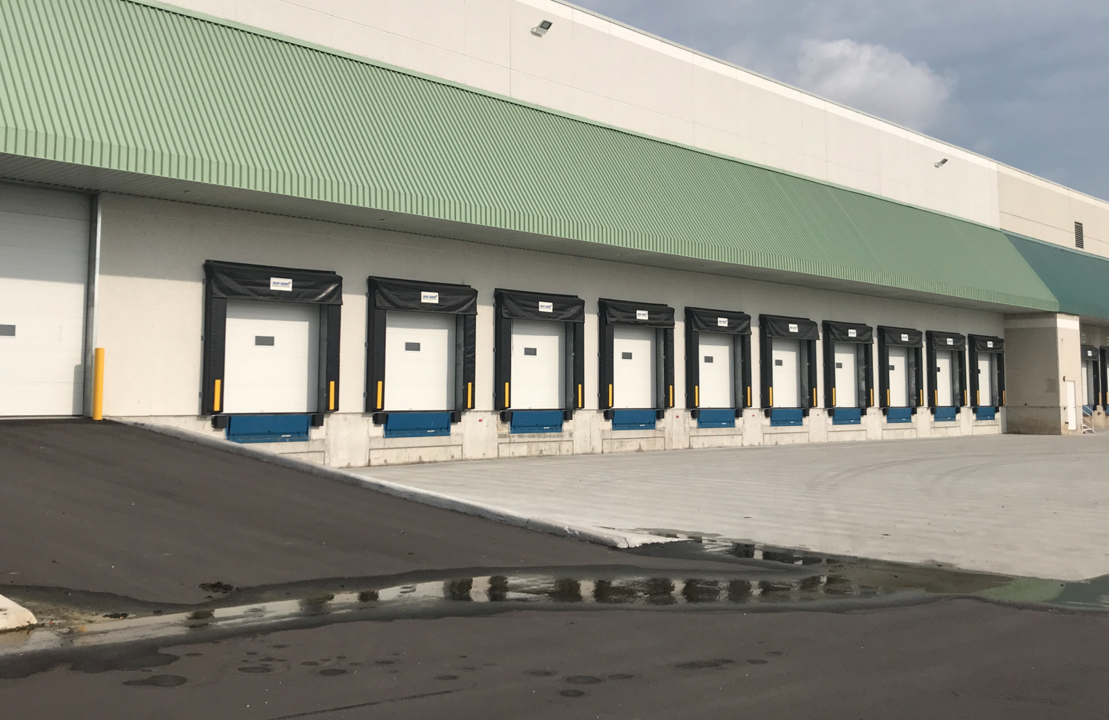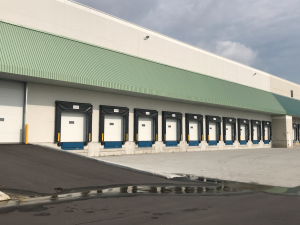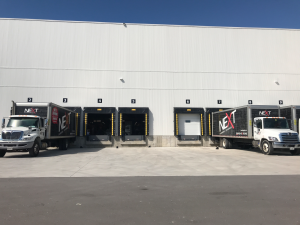
How to Unlock & Maximize the Value of Your Real Estate
“Buy low and sell high”… the time-old aphorism surrounding real estate was and is still true. Performing arbitrage and collecting a profit consistently is a foundational strategy of investing.
However, in the context of a private or corporate owner-occupier trying to efficiently leverage resources to grow their business operations, there is an alternative strategy that may kick-start growth through a re-allocation of capital.
Or, if one were so inclined they could take those funds, or a portion of them, they could reinvest them into other asset classes, use them for personal consumption, or even put them away for retirement.
What we are describing is simply an option, a tool in the toolbox for investors and occupiers. One that, given the state of commercial real estate in the GTA, may be worth examining to find product for investors and convert or liquidate peak-value assets for owner-occupiers.
So without further ado, let’s take a look…
Why Are Sale Leasebacks So Popular?
A sale-leaseback is a transaction where a business owner sells it’s real estate and leases it back for a fixed term on previously agreed to terms while maintaining control of the property for the continued operation of its business.
Because performing a sale-leaseback allows owners to get an influx of cash immediately, while also potentially getting a higher return on that capital should they reinvest it into their operations.
For example, a business running a 25% profit margin can, in theory, make a larger return than simply taking the yield from a 5 CAP.
And with CAP rates compressing further and further, that gap between yield and potential margins grows bigger and bigger. Assuming the business is confident in its ability to scale the operation and maintain margins, it would be worth considering.
In addition, the securing of a mid- to long-term lease would provide certainty and hedge against short-term risks or market happenings.
Finally, the additional leverage gained from accessing the full disposition value compared to financing received on a bank’s loan-to-value ratio means that selling the asset truly does maximize cash in the bank (without being on the hook of a financial institution).
So, What’s In It For the Seller:
- Unlock Real Estate value: For many sellers, it is an opportune time to unlock hidden value in their real estate and allow for more efficient and effective use of capital because the strong real estate market fundamentals, coupled with the still historically low interest rates, have driven up property values. Consequently, Sale-leasebacks have become an important strategy to redeploy the real estate value and better position a business for growth, obtain liquid capital for other investments, to provide shareholder distributions, buy back stock or for any other corporate business needs.
- Maintain control of an asset: A Sale-leaseback typically enables the property owner to not only continue to occupy its current space but to also retain nearly full operational control over it. While conventional mortgage financing generally requires lender approval rights and restrictions with respect to the borrower’s operation of the mortgaged property, the seller/new tenant in a Sale-leaseback generally has free rein. Restrictions typically are limited to acts or omissions that would have a material adverse effect on the value of the property, result in the violation of applicable laws or create property liens.
- Tax benefits: Under a Sale-leaseback rental payments are tax deductible against the companies taxable income, while only the interest portion of a mortgage payment is tax deductible.
- Improve Company’s Balance Sheet: The Sale-leaseback transaction also improves the company’s balance sheet to the extent that any debt related to a real estate asset would be retired concurrently to a sale-leaseback transaction. Thus, a company’s balance sheet will show a larger amount of current assets and larger total assets, improving the debt-to-equity ratio.
- Remove management headaches: For non-real estate businesses that currently manage their owned facilities, the ability to shift certain responsibilities for managing the property to a professional real estate owner can be appealing. By having an experienced real estate owner worry about the real estate, the tenant can focus on core operations and potentially realize significant savings in operating costs.
- Increase in stockholders equity: Stockholder equity also is increased because profits realized from a sale-leaseback result in higher retained earnings.
- Enhanced performance: Sale-leaseback transaction enhances a company’s performance by freeing up credit facilities needed to finance accounts receivables, inventory, growth, and expansion.
- Favorable Lease Structure: Property owners/sellers are in a position to create and structure the lease portion of the agreement to support specific business objectives, including rental amount, lease term, and a number of renewal options.
And, What’s In It For the Buyer?
- Steady long term yield: Buyers benefit from the steady yield of that long-term lease. This is especially attractive to institutional investors such as pension funds and insurance companies that look for long-term inflation protection and predictable ROI. With today’s low-interest rates, even a low-level yield that has inflation protection can be enticing to investors.
- Favorable Return on Investment: Sale-leasebacks usually provide higher returns than bonds for similarly rated tenants, with real estate ownership being additional security.
- Limited ongoing responsibilities: Sale-leasebacks may also appeal to buyers because of limited ongoing responsibilities if they involve “net lease” or “triple net lease” transactions with the tenant maintaining responsibility for ongoing expenses of the property, including property taxes, building insurance and maintenance.
The Anatomy of a Sale-Leaseback
A Sale-Leaseback transaction should provide both short and long-term value to both parties, who may have differing objectives but are aligned in ensuring the deal goes to completion.
Seller’s Objectives:
- Eliminate responsibility of managing and upkeep of property
- Realize and redeploy capital more efficiently back into the business
- Maximize proceeds from the disposition
- Lock in acceptable fixed rental payments for leaseback over a longer period of time
- Secure tenancy through mid- to long-term lease
Buyer’s Objectives
- Acquire the property at a reasonable valuation
- Obtain favorable, long-term stream of rental income
- Invest in an asset in a desirable location, in good physical condition without any environmental issues for a long-term play
- Avoid properties with significant capital expenditure requirements
- Ensure tenant is creditworthy
Conclusion:
Owners/occupiers of Commercial Real Estate in the Greater Toronto Area are well-positioned in the current market environment to leverage a Sale-Leaseback to maximize proceeds and receive a top-of-market-value capital injection into their operations.
With historically low vacancies and buyers hungry for product, it may be worth considering doing due to the potential to receive multiple interested parties and leveraged demand that would result in a great outcome.
Well-capitalized global and institutional investors and pension funds all increased allocation to commercial real estate and local, high net worth developers and investors are also looking for opportunities.
As a matter of fact, our team successfully sold 5 properties in the last few months, all under multiple offers (anywhere from 5 to 15). We have a proven process that guarantees not only success (because anyone can sell a property in today’s market) but a smooth transaction with firm and predictable end-results.
Given that you likely took on a lot of risk and worked extremely hard to come in possession of your asset, it would be prudent to ensure that you position and sell it properly to support your business moving forward.
It is crucial to select the right broker/advisor to ensure that the property value is maximized, the company’s operational interests are fully protected, and that the transaction itself actually closes.
If this is something you would like to explore further, please give us a call for a no-obligation assessment of your needs.
Until next week….
Goran Brelih and his team have been servicing Investors and Occupiers of Industrial properties in Toronto Central and Toronto North markets for the past 25 years.
Goran Brelih is a Senior Vice President for Cushman & Wakefield ULC in the Greater Toronto Area.
Over the past 27 years, he has been involved in the lease or sale of approximately 25.7 million square feet of industrial space, valued in excess of $1.6 billion dollars while averaging between 40 and 50 transactions per year and achieving the highest level of sales, from the President’s Round Table to Top Ten in GTA and the National Top Ten.
Goran is currently serving as President of the SIOR ‐ Society of Industrial and Office Realtors, Central Canadian Chapter and on the Board of Directors of Muki Baum Accessibility Centre, a Toronto‐based NGO which provides support to children and adults with complex disabilities.
Specialties:
Industrial Real Estate Sales and Leasing, Investment Sales, Design Build and Land Development
About Cushman & Wakefield ULC.
Cushman & Wakefield is a leading global real estate services firm that delivers exceptional value by putting ideas into action for real estate occupiers and owners. Cushman & Wakefield is among the largest real estate services firms with 48,000 employees in approximately 400 offices and 70 countries.
In 2017, the firm had revenue of $6.9 billion across core services of property, facilities and project management, leasing, capital markets, advisory, and other services. To learn more, visit www.cushmanwakefield.com or follow @CushWake on Twitter.
For more information on GTA Industrial Real Estate Market or to discuss how they can assist you with your real estate needs please contact Goran at 416-756-5456, email at goran.brelih@cushwake.com, or visit www.goranbrelih.com.




